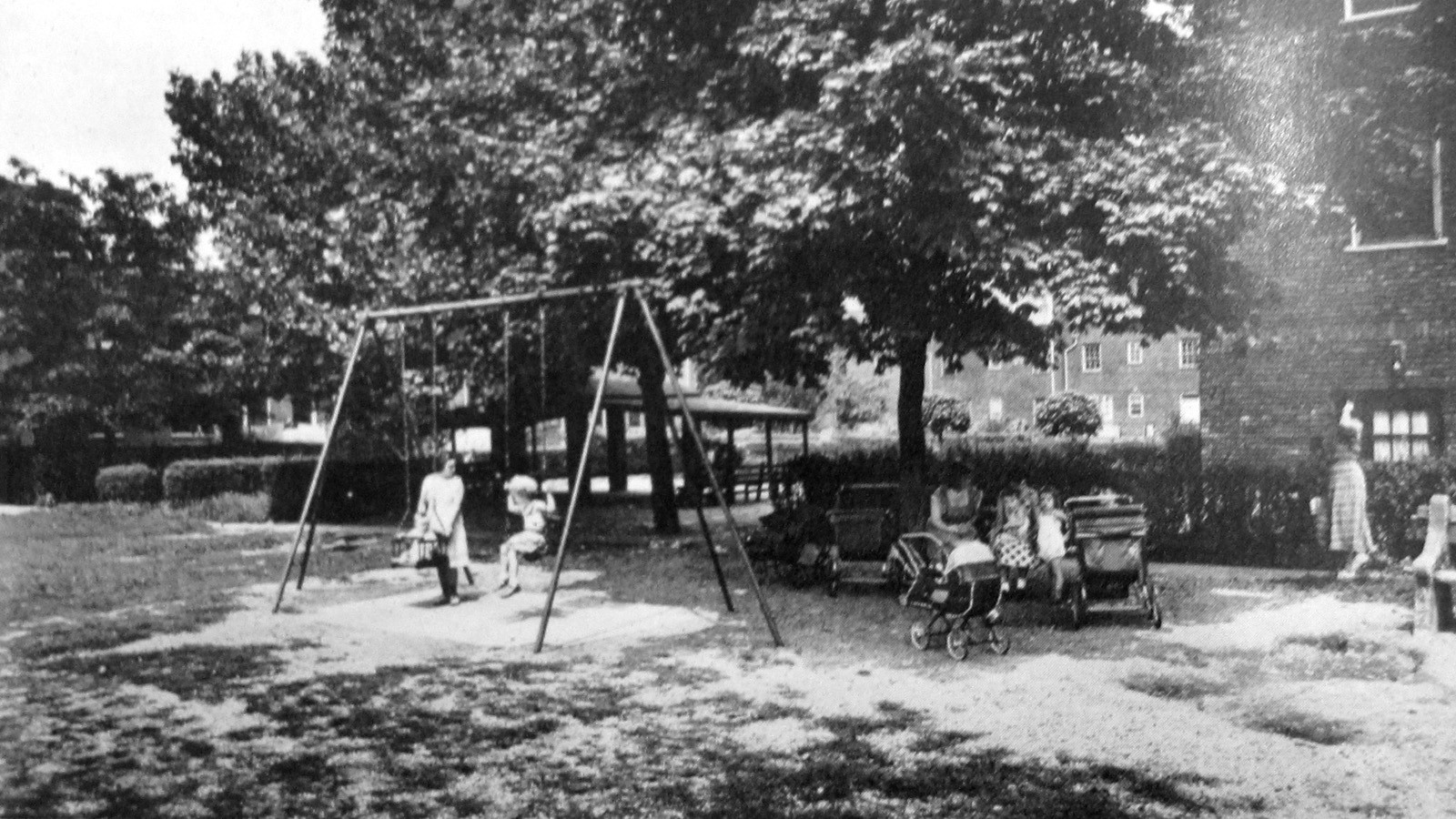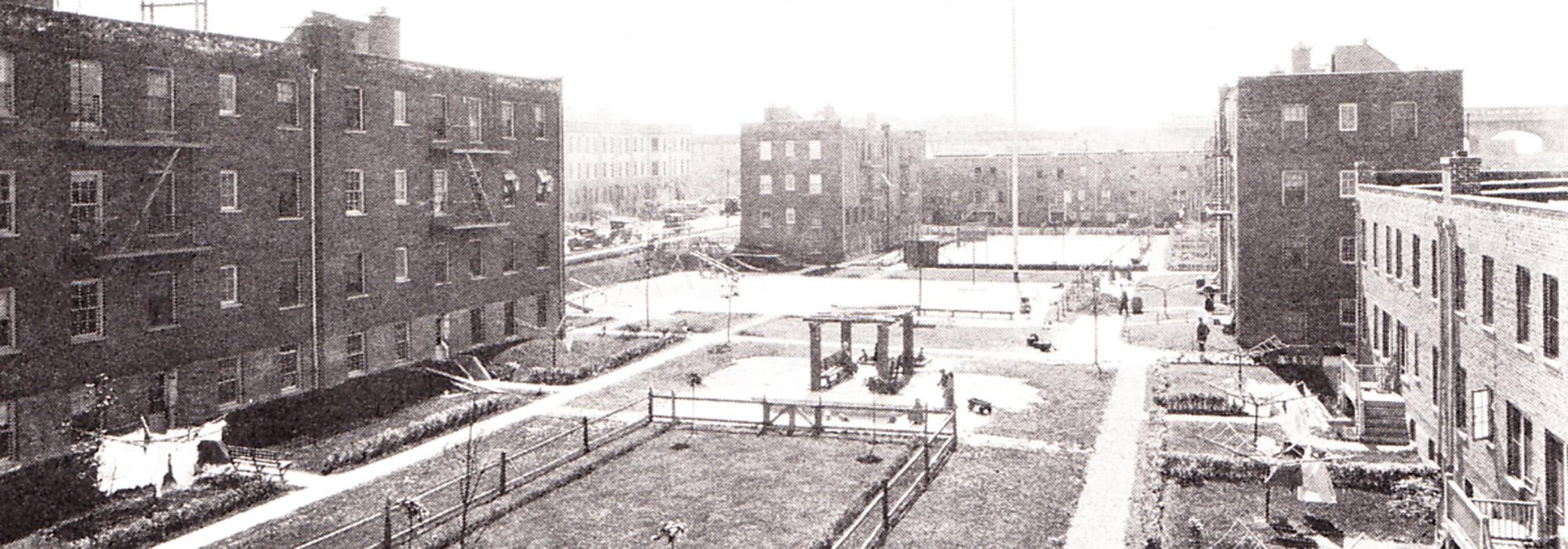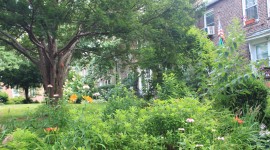Threat to Rare Progressive-Era Playground is Big Threat to Valuable Open Space

Development plans threaten the Phipps Outdoor Nursery in the New York City Landmark historic district of Sunnyside Gardens. The playground, which is notable as one of the last intact Progressive Era playgrounds in New York City, may soon be demolished to make way for new construction.
History

Sunnyside Gardens Plan, from Stein, Clarence. Toward New Towns for America. New York: Reinhold Publishing Co., 1957.
Sunnyside Gardens, constructed between 1924 and 1928, was one of the first superblock communities built in the United States. Just three years after its completion, the Society of Phipps Houses supported the addition of an affordably priced apartment complex adjacent to the Sunnyside community. Among the site’s significant design features is the generous amount of open space. The significance of the complex is demonstrable - Sunnyside Gardens, including Phipps Garden Apartments, was added to the National Register of Historic Places in 1984. In 1991, the neighborhood was named a National Planning Landmark and was designated a New York City Historic District in 2007.
The Sunnyside community was constructed during the Progressive Era, a period from the late 19th century until the Great Depression, where social activism and political reform, including a concern for housing, and quality of life for the working class, held sway. At Sunnyside Gardens, architects Clarence S. Stein, Henry Wright, and Frederick L. Ackerman worked with landscape architect Marjorie Sewell Cautley to create a plan for a holistic community that would meet the needs of modern families and their children. Reserving unusually large areas for open space and minimizing construction costs, the designers created homes affordable for working people arranged around common gardens and parks.


Photos courtesy Thaisa Way
The Phipps Garden Apartments were remarkable for the elaborate garden courts at the core of the complex. Housing was provided for three-hundred and forty families in four and six story buildings covering 43% of the land, while the rest was left as outdoor space. Marjorie Sewell Cautley, who also collaborated with Stein on the model city of Radburn, New Jersey, was hired as the landscape architect for the project. For Sunnyside and Phipps she designed the gardens as spaces for families and in particular for children – siting toddler's play areas throughout the neighborhoods as well as offering amenities for older children and gathering spaces for youth. To emphasize the permanency and importance of the garden areas she persuaded the Phipps foundation to purchase large trees to be moved into the gardens prior to the completion of the apartment buildings. Cautley’s landscape, which included a large variety of gardens within a relatively small footprint, became a defining feature of the community.
For more than a half a century at the corner of 39th Avenue and 50th Street, Phipps Garden Apartments operated its popular Outdoor Nursery and playground for tenants’ children and other neighborhood groups, before the sale of the nursery and playground in 2007. At issue is the playground area, which was specifically designed to be open space to serve the community. Though the site appears diminished, all of the playground’s visual and spatial qualities, along with its architectural and landscape features, are remarkably intact. Original features remain, including a large wooden shade structure or picnic house, a child-scaled wood frame playhouse, original steel play equipment,and mature specimen trees. Proposed new construction would effectively eliminate that open space. According to the Guidelines for the Treatment of Cultural Landscapes
(Department of the Interior, National Park Service, 1996): “A property will be used as it was historically, or be given a new use that maximizes the retention of distinctive materials, features, spaces, and spatial relationships.” The extant structures reflect both the period of design and use and can continue to serve the community in new ways. The playground links the Sunnyside Gardens and Phipps communities together and is the sole surviving landscape that can testify to that significant aspect of the Sunnyside Gardens vision.
Threat

Phipps Playground, 2013. Photo courtesy Sunnyside Gardens Preservation Alliance.
Phipps sold the playground after it became part of the Sunnyside Gardens Historic District in 2007. The playground, which is currently closed to the public, is the subject of a development proposal for a market-rate apartment complex. The current plans would remove a significant portion of the site’s open space and destroy this uniquely valuable playground with a development that is entirely inappropriate to the design, materials, massing, and sense of place that derives from the architectural consistency of this historic district.
How to Help
The Landmarks Preservation Commission will rule on the proposed development after a Public Hearing on October 15. Interested parties can contact Sunnyside Gardens Preservation Alliance at: SunnysideGardens@verizon.net, and may submit a comment prior to the NYC Landmarks Preservation Commission’s Hearing to the addresses noted below:
comments@lpc.nyc.gov
SunnysideGardens@verizon.net
cautleygarden@gmail.com
NGulotta@council.nyc.gov





